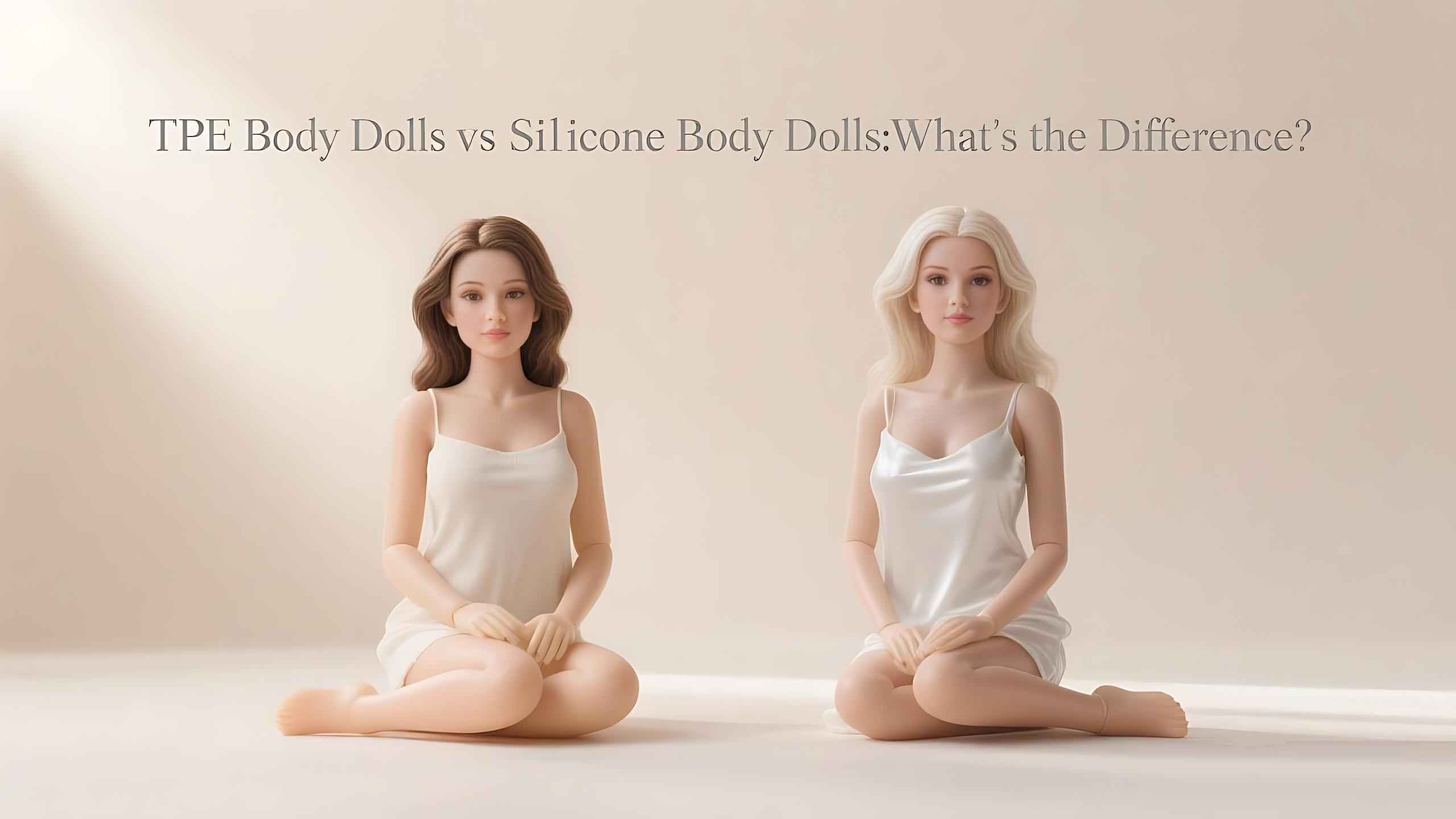TPE Body Dolls vs Silicone Body Dolls: What’s the Difference?

When choosing a realistic love doll, one of the most important decisions is selecting the right material — TPE (Thermoplastic Elastomer) or Silicone. Both materials have their unique characteristics, advantages, and trade-offs. In this article, we’ll break down the key differences between TPE body dolls and silicone body dolls, covering aspects like material properties, texture, odor, stretchability, durability, and price.
1. Material Properties
TPE (Thermoplastic Elastomer) is a flexible, rubber-like material derived from SEBS (Styrene-Ethylene-Butadiene-Styrene). Its hardness can be adjusted through factors such as SEBS density, oil content, and PP (Polypropylene) ratio — in fact, TPE can be made significantly softer than silicone, sometimes even several times more pliable.
In addition to its softness, TPE offers high elasticity, strong resilience, and excellent moldability, making it not only environmentally friendly and safe but also highly versatile for manufacturing. It’s easy to color, can be processed through injection molding, and supports both secondary molding and single-material forming. These features make TPE a popular and cost-effective choice in the production of realistic dolls.
For an even more lifelike experience, some users pair TPE dolls with a warming lubricant to enhance realism during use.
2. Texture & Touch Difference
TPE excels in elasticity, far surpassing traditional silicone in terms of softness and give. By carefully adjusting the density of TPE, manufacturers can fine-tune different parts of the doll to deliver varying levels of softness and firmness — achieving an incredibly human-like touch.
For areas requiring extra softness (like joints or more sensitive zones), designers often create hollow structures during the molding process. This enhances flexibility, curvature, and the overall tactile experience — sometimes even surpassing what standard silicone can offer.
That said, silicone technology has also evolved. Ultra-soft silicone is now available in high-end dolls, providing a similarly plush feel — though often at a higher cost.
3. Odor Characteristics
Silicone dolls — especially those made from addition-cure (platinum-catalyzed) silicone — are typically odorless or have only a very faint scent. This makes them more pleasant “out of the box.”
On the other hand, even high-quality TPE materials (such as the imported polymer TPE used in premium brands like “Shurui Bao”) may still carry a slight rubbery or plastic-like smell. To address this, many manufacturers add fragrances — which can be either natural or synthetic. Natural scents are eco-friendly and non-toxic but tend to be more expensive, while synthetic options may offer stronger aromas but could include more chemical components.
4. Texture, Detail & Stretchability
Silicone is inherently firmer than TPE, which gives it an advantage when it comes to fine detailing — especially in the head and facial features. Silicone can reproduce very delicate textures such as skin pores, facial lines, and sharp contours much more accurately than TPE, which tends to have a softer, rounder overall appearance.
When it comes to stretchability, silicone can typically stretch about 3 to 5 times its original length, depending on the formula. TPE, however, can stretch up to 6 to 8 times, offering greater flexibility and allowing for more extreme poses. That said, silicone used in the body of a doll may be more prone to tearing if overstretched or improperly handled — so extra care is needed.
5. Durability & Price Considerations
Silicone is well-known for its superior resistance to high temperatures, UV rays, and chemicals such as acids and alkalis. This makes silicone dolls highly durable and capable of maintaining makeup and surface details over time with minimal degradation.
TPE, while slightly less resistant to aging and wear, benefits from its re-moldable nature, which helps reduce production costs — making TPE dolls more affordable and accessible. It also allows for easier customization, such as swapping out wigs, limbs, or even entire body parts.
Due to the higher cost of raw silicone materials, full silicone dolls are significantly more expensive than their TPE counterparts.
Which One Should You Choose?
- Go for Full Silicone if you prioritize realism, fine details, and durability, and don’t mind paying a premium.
- Choose Full TPE if you want a soft, lifelike feel at a more affordable price.
- Opt for a Silicone Head + TPE Body combo if you want high-quality facial features with a comfortable, poseable body — the best balance for most users.
Related Products / Accessories
To enhance your experience with your doll, consider pairing it with the right lubricants:
- Warming Lubricant – Adds a realistic warmth for a more lifelike feel.
- Silicone Based Lubricant – Great for silicone dolls (but check compatibility with TPE).
- Natural Lubricants – Eco-friendly and gentle on both skin and material.
- Edible Lubricant – Fun and safe option for roleplay or light oral use (if applicable).



